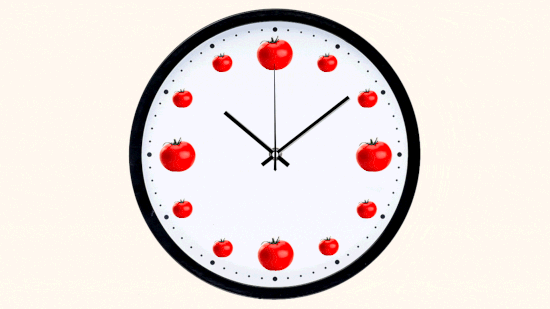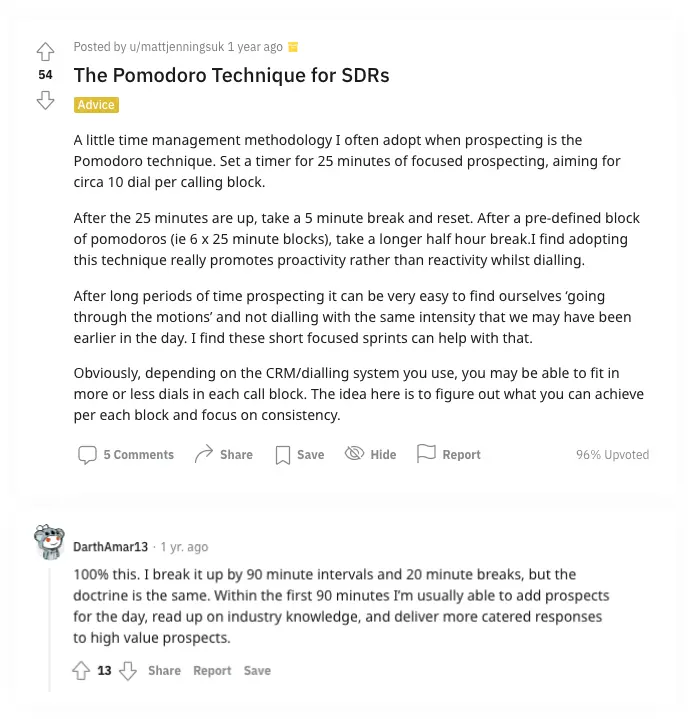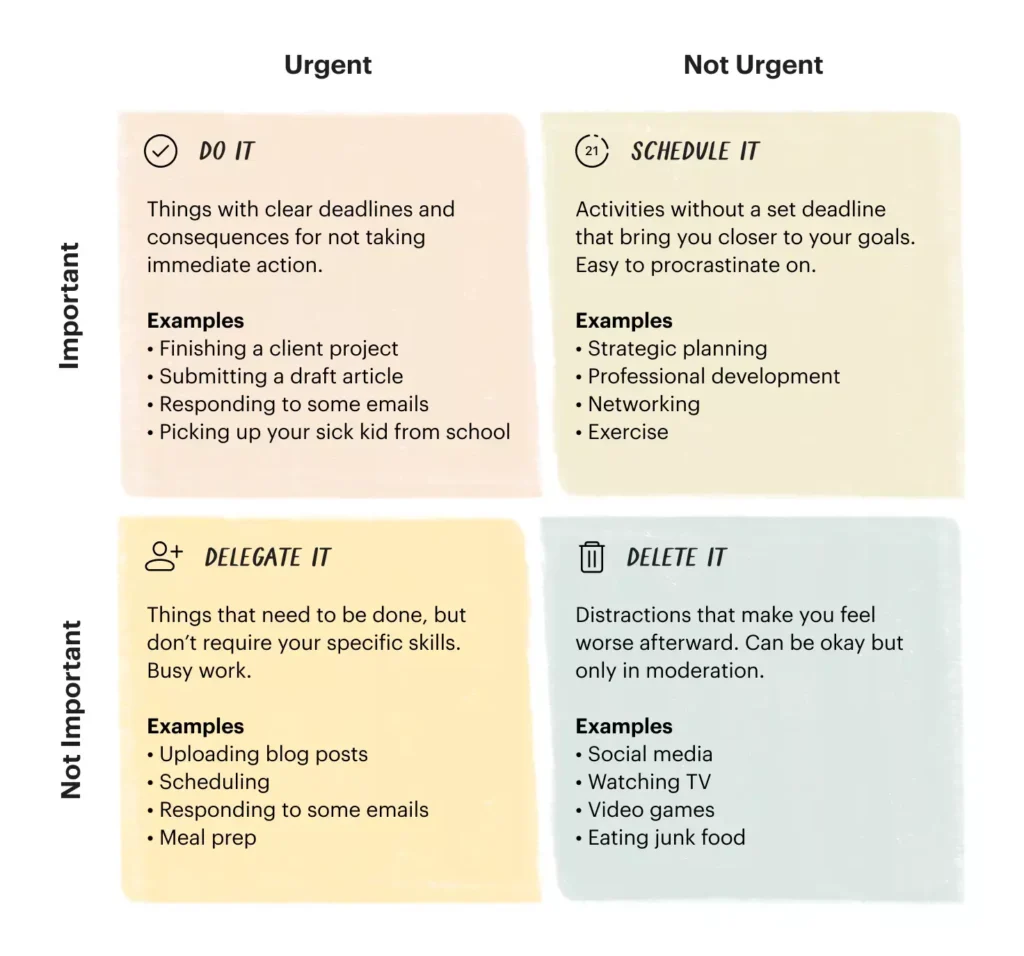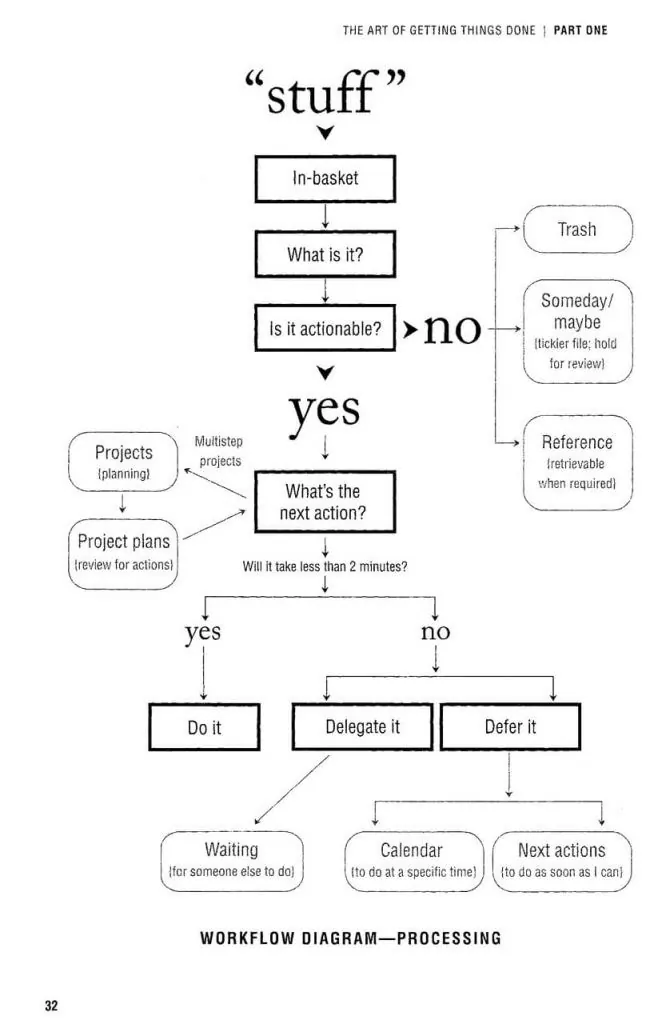Everyone’s running out of time, figuratively and literally. So, what’s the best way to spend time wisely, especially at work?
"Did I forget to do something?” is never a good question. Whether it's right after leaving home, or at the end of a productive day, the foreboding feeling of having to recap the entire day is tiresome. As a salesperson, you know this feeling too well. Between deal-related activities like scheduling demos and booking meetings, and admin tasks like updating the CRM and internal meetings or reviews, time flies.
The most obvious solution is to get organized, choose a time management technique, and stick to it (Capt. Obvious, much?). It's easier said than done. With barely enough time to get through all the checkboxes in your to-do list, where would you find the time to even begin researching on time management techniques? It's hours of reading blogs, watching videos, and hearing opinions. Before you know it, your quest for time management techniques has wasted time you didn't have in the first place. The irony!
In a bid to save you some time, this blog contains a deep dive into three time management techniques, specifically aimed at making life easy for salespeople. The Pomodoro Technique, the Eisenhower Matrix, and the GTD Methodology are three of the most renowned and followed principles that guarantee a boost in productivity, and overall quality of mental peace.
So, give your keyboard a rest and stop worrying about Google judging you for your recent searches.
I. Pomodoro Technique

Pomodoro is famous for being one of the most followed time management techniques. However, the Italian-speaking population knows it as a fruit that’s often mistaken to be a vegetable. Pomodoro is the Italian word for Tomato.
We Say Tomato, Cirillo Says Pomodoro
Francesco Cirillo invented the Pomodoro Technique based on a tomato-shaped kitchen timer he used in university. He would twist it to a specific time limit, and use the ticking as the background score while he focused on getting things done. When the timer hit zero, the ringing would signal a quick recess. A few minutes later, Cirillo would get back to work, winding up the timer once more. Four Pomodoro cycles later, he would take a longer break, lasting 30-40 minutes. And, why not? He’d earned it after all. Maybe he could go get a sandwich. Maybe the sandwich would also come with a Pomodoro.
Pavlov Meets Productivity
More than being a technique, Pomodoro is a discipline. It takes practice, and once the routine sets in, it’s crunch time. Similar to AMRAP (As Many Reps As Possible) in functional training regimes, the goal is to do as much as possible within a specific amount of time. The quick break between each set lights up the reward centres in the brain. This, in turn, serves as motivation to go hard in the next set. Instead of a fight against time, each Pomodoro encourages the practitioner to test their own limits and push beyond. The result is a healthy relationship with work, and a break-up with procrastination.
With “No Distractions” as one of the main tenets, the Pomodoro Technique encourages participants to put any and all distractions away. No phone, no screens (other than the one you’re using, of course), no excuses. Using a digital timer or app to keep time? No can do. You’ll get interrupted by notifications. Get a good old mechanical timer. Total immersion, 25 minutes at a time, that’s the name of the game.

The Flip Side
• The Flow State
In creative pursuits like writing, the flow state cannot be ignored. When someone gets into the zone, they must chase the idea until they hit a wall. This cannot be timed or contained within a Pomodoro cycle. Productivity and creativity may not always go hand-in-hand.
• Limited Application
The Pomodoro Technique works great for individual contributors. But, when it comes to tasks that involve teams, it could lead to a scheduling nightmare. While the WFH culture still thrives, there are still organizations that cannot operate remotely. You can’t be a team player if you refuse to attend meetings because the tomato timer is still running.
• Adaptability
Pomodoro is not a plug-and-play concept. It’s a strict routine that must evolve into a habit before results start showing. According to a study by Dr Phillippa Lally, a senior researcher at University College London, it takes an average of 66 days to form new habits. The possibility of losing steam is high until the 66-day threshold is crossed.
• On the Bright Side
The Pomodoro Technique could be useful while shopping online. We all know it takes hours of browsing before we can find what we want, if we really want it. The next time you feel the craving to go on an online shopping spree, twist the tomato. If you don’t find what you’re looking for in 25 minutes, you don’t buy anything. Expense averted! You’re welcome.
II. Eisenhower Matrix
When Dwight David "Ike" Eisenhower said, "I have two kinds of problems, the urgent and the important. The urgent are not important, and the important are never urgent.”, little did he know it would inspire one of the most popular time management techniques.
Prior to becoming the 34th President of the United States of America, Eisenhower served as an army general and commander of the Allied Forces Supreme in World War II. As a result, he was forced to constantly make quick decisions in a limited amount of time. There was no room for error, especially on the battlefield.
The Four Quadrants of Productivity
Stephen Covey took this ideology and created the time management formula, "The Eisenhower Principle”
Stephen Covey is credited as the inventor/promoter/formulator of the Eisenhower Principle. If the name sounds familiar, you may probably know him from one of his most famous book, The 7 Habits of Highly Effective People. According to the Eisenhower Method, every job or task can be categorised under 4 types.

1. Important and Urgent (Do Now)
This is a double whammy. Some tasks cannot be escaped—things with deadlines, or immediate negative repercussion if ignored. As soon as the clock starts ticking, it’s crunch time. Remember, if you hesitate now, this could trigger a domino effect and leave your schedule in ruins. It’s like choosing the right outfit on a first date; the longer you take, the lesser time you get to actually create an impression. And, nobody likes a late first date. “What do we say to the God of Procrastination? Maybe later.” - Unknown Source On the bright side, getting these tasks out of the way first frees up a lot of time. Some of the tasks in this quadrant might even give you an endorphin rush once completed. You can successfully keep the feeling of impending doom at bay, and take a breather before going into the next quadrant of tasks.
2.Important and Not Urgent (Do Later)
The tasks in this quadrant cannot be rushed. “Well begin is half done” doesn’t apply here. “I’ll do it later” might sound like procrastination, yet it’s not always the case. These are hygiene activities with a long-sighted goal. Updating the CRM, looking up cold calling scripts and email templates, reading newsletters, and so on. These are big picture items which definitely help you stay on top of things, and be the best version of yourself.
3. Not Important and Urgent (Delegate or Automate)
This quadrant serves as the glitch in the matrix. It’s often difficult to separate the urgent from the important. In such cases, the question to ask is “Can this be done by someone or something else?”
4. Not important and Not Urgent (Delete)
It’s completely valid to wonder why this quadrant even exists. Maybe it’s aesthetics, maybe it’s Maybelline. Breaks, breathers, rest, and relaxation fit into this square. A video you paused, the texts piling up on your phone, that celebrity you stalk—you get the drift.
Chronology by Priority
This matrix is driven by consequence—“What happens if this task doesn’t get done?” Constantly asking this question about each task makes it easier to place into each quadrant. Some tasks may require attention immediately, while some others could be done later. There might even be tasks you could get someone else to do. And when the mist clears, you’ll find out there were some things on your list that didn’t have to be done in the first place.
The Eisenhower Matrix works by identifying different types of tasks, and putting them into those specific boxes to enable a linear workflow. If the tasks aren’t executed according to the quadrant, they will all eventually land in the Urgent and Important square. So, follow the Eisenhower way, and keep chaos at bay!
The Flip Side
• The Zero Step
The first step of sorting activities and tasks before getting started is the most time consuming part of the Eisenhower Matrix. If you have many tasks, it can quickly get overwhelming, pushing you to quit before you even begin.
• Delegation Debacle
The Eisenhower Matrix does not take into consideration the nature of each task, the difficulty or complexity, or the resources required to execute the task. Despite having room for delegation, the time taken to supervise and follow up to make sure the person responsible sticks with the program isn't accounted for. This may lead to micro-management, and strained relationships in the workplace.
• No Breaks
Unlike the Pomodoro Technique, the Eisenhower Matrix does not account for breaks. Instead, it suggests the user must put recreational activities in the Delete section. While "less breaks means more time” may seem logical, it is simply not practical.
III. Getting Things Done: The Art of Stress-Free Productivity
It's often considered that stress and productivity go hand-in-hand. But, David Allen preaches the opposite in Getting Things Done, the art of stress-free productivity.
The Head Office Paradox
David Allen believes the problem with productivity is the Head Office. The office in your head, get it? In many interviews, David Allen states, “The problem these days, is that most people are trying to use their heads as their office. And, your head is a crappy office.” The brain is allergic to clutter. If there are more than 4 things to keep track of, alarms are triggered and the mind goes blank. Clearing the clutter by recording incoming tasks creates space for execution and productivity in the Head Office. Instead of multitasking, the idea is to focus on each task and execute it quickly before moving on to the next one. David Allen likens this method to being jumped in an alley by four attackers. Trying to take all of them at once isn’t going to end well. Instead, focusing on each opponent and striking hard and fast is a better strategy. Don’t worry, you won’t have to pick fights to be productive.
GTD in Sales
As a salesperson, you have new tasks coming in all day. Emails from prospects, messages from colleagues, tasks from your CRM, and so on. This is when the GTD methodology kicks in, where you must first ask yourself, "Should I execute on the fly, or focus on the actionable items first?"
All the Items in Your Task List Can Be Categorized Into 3 Broad Types
1. Actionable Standalone Tasks
Actionable items require a response. Focusing on each of these items and getting them out the way is the first step to clearing up your schedule. If you can execute within 2 minutes, do it right away. If it’s going to take longer, write it down and come back to it later. This way, you can manage interruptions and avoid getting distracted while in the flow state. More than managing time better, this also leads to creating time to focus on projects.
2. Projects
Process based tasks which contribute to a short term or long term goal. These are often made up of smaller tasks, which need to be executed in a step-by-step manner. Winning a deal is a good example of projects. Each deal takes time, and contains various activities to inch closer to conversion. Once a project is assigned, the first step or immediate next action must be identified. Without this, the project will remain ambiguous, and lead to delays or procrastination.
3. Non-Actionable Tasks
Emails and messages of the FYI nature fall into this category. While they do require your attention, it's not urgent as long as you can remind yourself to get to it later. A better option is to ask yourself, "Can this be delegated, or completely deleted from the task list?” If a task can be removed or forgotten, do so without hesitation.
With the theory out of the way, let's recap. Whenever a task is assigned, ask yourself the following questions:
Is it actionable?
Can I execute in less than 2 minutes?
a) If yes, what's the next step?
b) If no, can I delegate it or schedule it for later?
Here's an illustration straight from the source for you to get a better idea of how the GTD methodology works.

The Flip Side
• Review Paradox
The GTD cycle is divided into 5 broad steps: Capture, Clarify, Organize, Review, and Engage. The Review stage can become a sinkhole for productivity, especially in sales. As more tasks keep coming in as the day progresses, the cycle gets restarted, resulting in you finding yourself taking longer to reach the Engage stage.
• Overwhelming Framework
Compared to the Pomodoro Technique and Eisenhower Matrix, the GTD Methodology takes more effort to maintain the course. The Pomodoro Technique has the 25+5 work-break ratio, which is easy to follow. The Eisenhower Principle has a matrix, which serves as an easy one-step framework. However, the 5 step process in GTD is comparatively complex and lengthy.
Tick-Tock, Time's Up!
Time management techniques are usually a last resort when productivity begins to wane. As a result, most people start at a low point as they begin researching and choosing a method that works best for this. The solution could be to shortlist multiple time management frameworks, choose what works specifically for you, and make your own method. Who knows, maybe you'll write a book someday and get featured in one of the next Time Management Techniques blogs.
Until then, good luck and god-speed on your journey to productivity!

